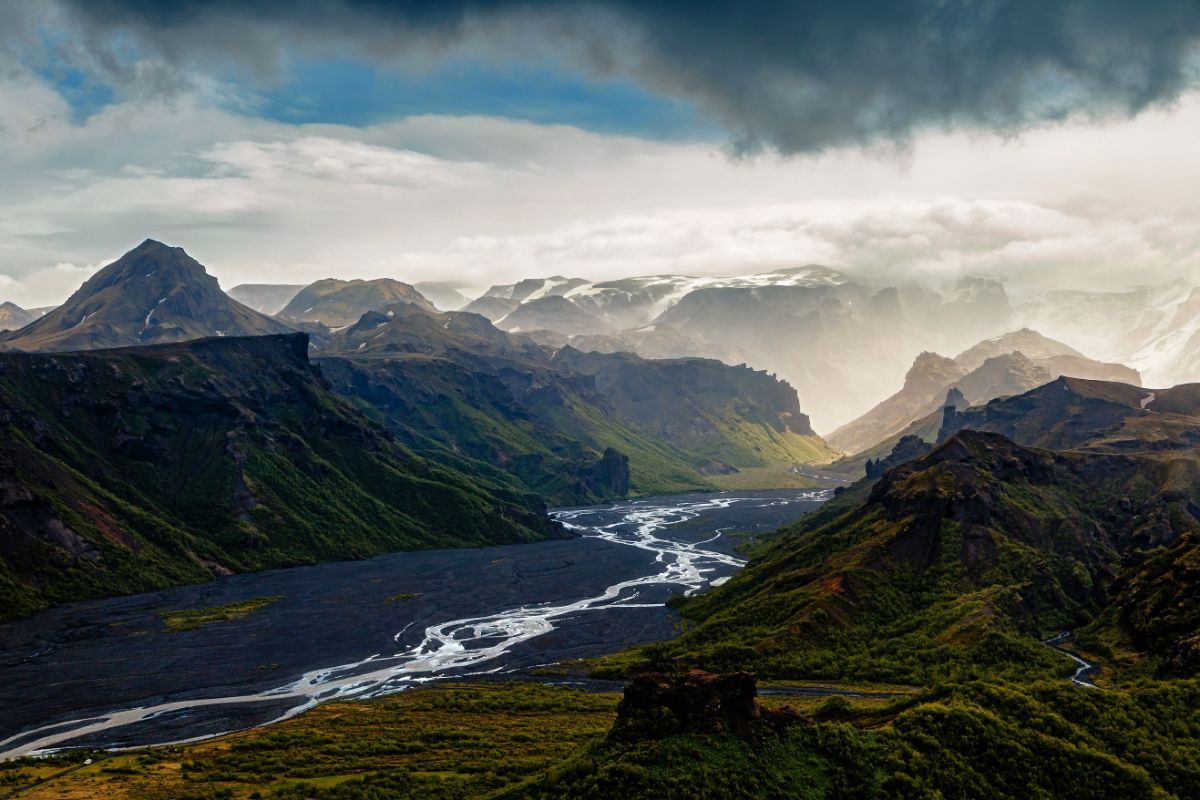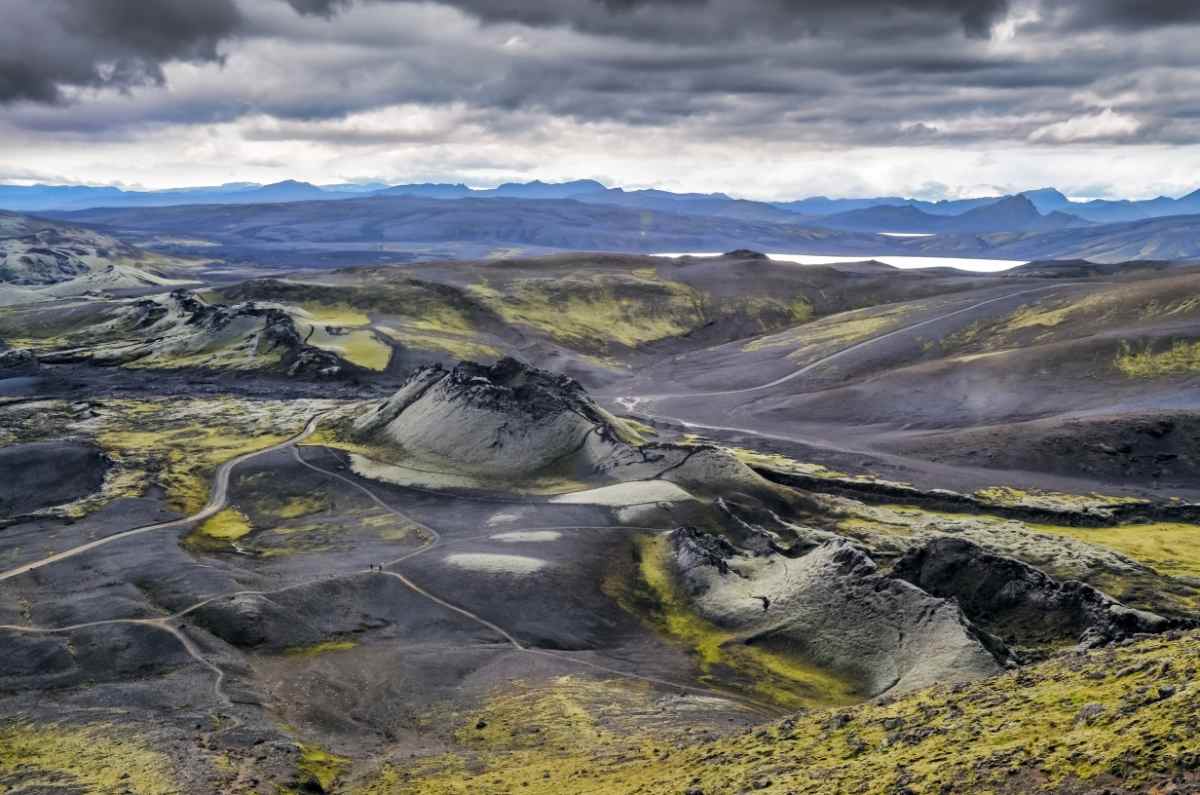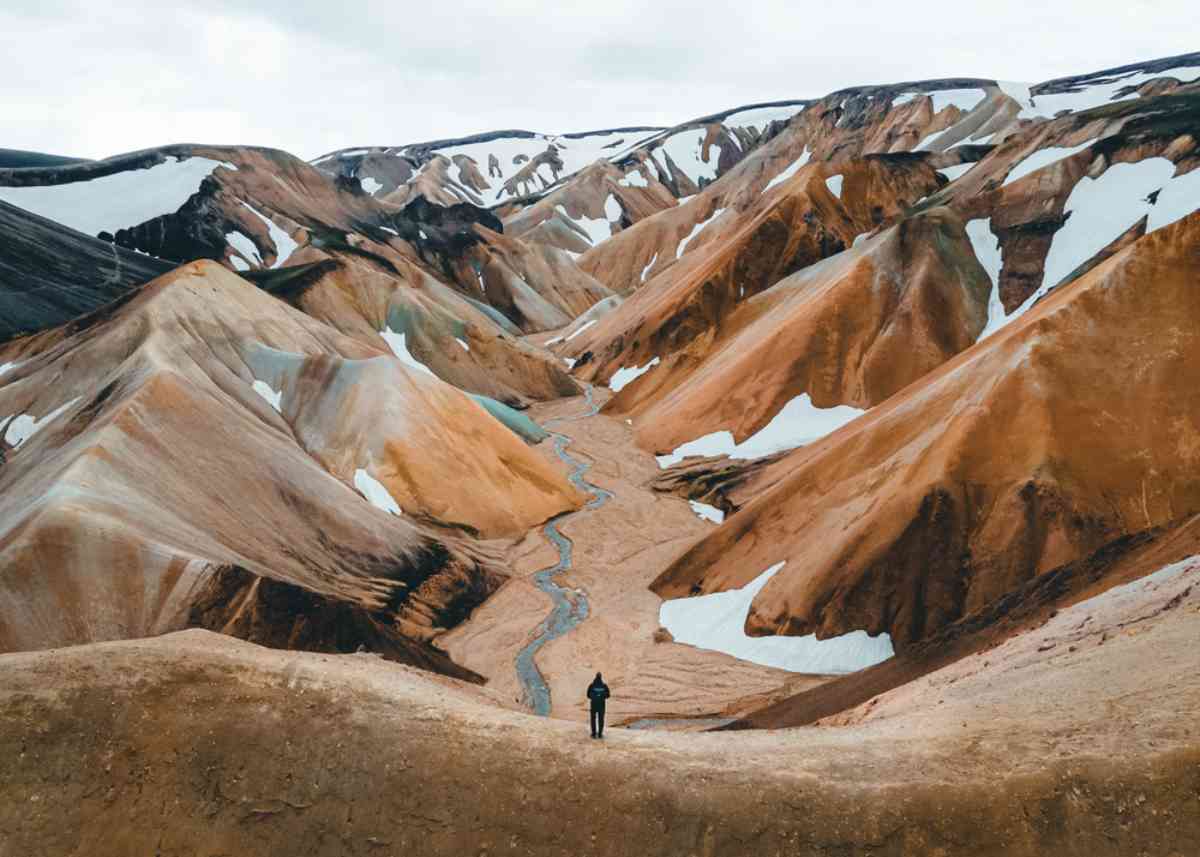If you're planning a trip to Iceland, there's one striking sight you absolutely can't miss: Hvítserkur. Hvítserkur is estimated to be about 15 meters (49 feet) tall and resembles a drinking dragon or a petrified troll that captures the imagination of visitors from around the world.
But what exactly is Hvítserkur, and why has it captured the hearts of so many travelers? Located on the remote Vatnsnes Peninsula in northwest Iceland, its unique shape and stunning surroundings make it a geographical gem you won't want to overlook. Let's look into what makes Hvítserkur so special and why it's a must-see on your Icelandic adventure.
Historical and Mythological Context of Hvitserkur
The Hvitserkur rock formation is primarily known for its distinctive shape, but there's more to this giant stone than meets the eye. The name 'Hvítserkur' translates to 'white shirt,' which comes from the white-colored guano of nesting seabirds that can be found on top of the rock, giving it a whimsical appearance. Let's examine some of the intriguing stories and legends behind this enigmatic rock formation.
Legends and Folklore of Troll Rock in Iceland
As with most striking rock formations in Iceland, Hvítserkur has been the subject of numerous Icelandic folklore and legends. Legend has it that Hvítserkur began as an Icelandic troll from the Westfjords, determined to destroy the bells of the Þingeyraklaustur Monastery.
Trolls, unlike elves, were said to fear Christianity, and in its rage, this troll failed to notice the rising sun, turning to stone forever. This myth carries a subtle Christian message, reflecting Iceland's resistance to Christianization.
Trolls symbolized stubborn and wicked people who resisted the new religion. Iceland's conversion to Christianity in 1000 AD marked a turning point, with social ostracism and punishment for those clinging to Old Norse beliefs.

Geological Formation and History
Hvítserkur, often called the ‘Rhino Rock of Iceland,’ owes its dramatic shape to centuries of relentless sea erosion. Powerful waves have sculpted the basalt rock, creating three large holes that give it a creature-like appearance.
This natural formation is made of basalt, a common volcanic rock in Iceland, known for its durability and distinct hexagonal columns. Basalt formations like Hvítserkur are scattered across Iceland, each with unique shapes formed by volcanic activity and erosion, which makes them fascinating geological features for visitors.
To protect this natural wonder from further damage, the base of Hvítserkur has been reinforced with concrete. People often debate what it resembles. Some see an elephant, others a rhino, while a few even imagine a dragon or dinosaur drinking from the sea. Whatever your imagination sees it like, we will leave it up to you to decide.
Visiting Hvítserkur
Visiting Hvitserkur in Iceland is an experience you'll never forget. The entire Vatnsnes Peninsula area is bursting with diverse landscapes, and Hvítserkur is the crown jewel among them.
How to Get There
If you're driving from Reykjavik to Hvítserkur Rock, prepare for a 3-hour journey covering about 229 kilometers (142 miles). The most common route involves taking the Ring Road and then turning off onto road F711, which is a gravel road that's in good condition and accessible to standard vehicles during summer.
Once you arrive, you'll find a parking area near Hvítserkur, with convenient access to viewing platforms and trails that lead down to the black sand beach. Just be warned, if you head down the trail leading to the Troll Rocks during the summer, then Arctic terns will swoop down to protect their nests.
They'll divebomb you until you're at a safe distance from their nests. Holding a stick in the air will help since they only attack the highest point.
Best Time to Visit
Hvitserkur, also sometimes fondly referred to as the Dinosaur Rock of Iceland, can be visited year-round; however, the best time to visit Hvítserkur is during low tide. At high tide, the water may reach up to Hvítserkur's base, making it challenging to see the rock's unique features. Here is what you can expect at different times of the year:
- Spring (March to May): Spring is a shoulder season for visiting Hvítserkur, offering milder weather compared to winter. The rock is often still dusted with snow, creating a dramatic contrast against the stark landscape. Wildflowers begin to bloom, adding pops of color to the surroundings. Crowds are smaller, allowing for a more serene experience.
- Summer (June to August): Summer is the most popular time to visit Hvítserkur, with long daylight hours, warmer temperatures, and stable weather. The midnight sun casts a magical glow over the rock, providing unique photo opportunities. Seabirds, including puffins, fulmars, and guillemots, actively nest, adding to the vibrant atmosphere. Crowds are larger, but the extended daylight allows for more flexibility in planning your visit.
- Autumn (September to November): Autumn is another shoulder season with fewer tourists. The weather can be unpredictable, with a mix of sunny days and stormy conditions. The rock takes on a different character as the surrounding landscape transitions to fall colors.
- Winter (December to February): Winter is the least popular time to visit Hvítserkur, but it offers a unique perspective. The rock is often covered in snow, creating a dramatic contrast against the dark winter sky. If you're lucky, you might catch a glimpse of the Northern Lights reflecting off the water. However, the weather can be harsh, with snow, ice, and strong winds. Some roads may be closed, and daylight hours are limited.

Exploring Other Attractions On The Vatnsnes Peninsula
Beyond these Iceland rock formations, the Vatnsnes Peninsula has several other interesting attractions to explore. Some popular options include:
Borgarvirki
Situated approximately 23 minutes away from Hvítserkur, Borgarvirki is a remarkable fortress built on a volcanic plug, offering stunning panoramic views of the surrounding landscapes.
This ancient site is believed to have been a strategic lookout and has a rich history linked to Iceland's early settlers. Visitors can explore its well-preserved ramparts and enjoy the vibrant flora and fauna, making it a perfect addition to your Vatnsnes Peninsula itinerary.
Vatnsdalur Valley
Vatnsdalur Valley is a scenic gem characterized by its lush green hills and impressive basalt columns. This valley is steeped in history, being the setting for the famous Vatnsdæla Saga. A must-visit is the Migandi waterfall, a picturesque spot perfect for photography, located just 50 minutes from Hvítserkur.
Kolugljúfur Canyon
Approximately 40 minutes from Hvítserkur, you'll find Kolugljúfur Canyon, a breathtaking natural wonder featuring two stunning waterfalls cascading down its rugged cliffs. Named after the giant Kola, visitors can enjoy the scenery from a newly constructed viewing platform, which provides an excellent vantage point to admire the canyon's dramatic beauty.

Ánastaðastapi Rock
Located just 45 minutes away from Hvítserkur, Ánastaðastapi Rock is another striking basalt monolith on the western side of the Vatnsnes Peninsula. Its vibrant hues stand out against the dramatic backdrop, making it one of the most captivating rock formations in Iceland. Visitors are often amazed by its unique colors and stunning vistas.
Hamarsrétt Sheep Roundup
The Hamarsrétt sheep roundup is a beautifully situated pen located right by the beach, just 50 minutes from Hvítserkur. Each September, Icelandic sheep are gathered here after spending the summer roaming freely across the stunning landscapes, showcasing a traditional aspect of Icelandic farming amidst breathtaking scenery.
Illugastaðir Seal Watching Trail
Just 30 minutes from Hvítserkur, the Illugastaðir Seal Watching Trail offers visitors a well-marked path leading to a viewing hut for observing harbor seals. This approximately 900-meter (2953 feet) trail boasts convenient facilities including parking and restrooms. For the best experience, visit two hours before or after low tide.

Hvammstangi Village
The village of Hvammstangi, is about a 50 minutes drive from Hvítserkur, is a charming destination known for its picturesque coastal scenery and vibrant local culture. Here, you can explore unique shops, enjoy fresh seafood, and learn about the rich history of the area, making it an excellent stop on your Vatnsnes Peninsula journey.
Wildlife Encounters
Beyond all of the sightseeing available in the area, Hvítserkur and the Vatnsnes Peninsula are also known for their diverse wildlife. Here are a few creatures you might encounter during your visit:
- Seals: As mentioned earlier, the Illugastaðir Seal Watching Trail is a popular spot for observing harbor seals in their natural habitat. However, you may also spot them lounging on the rocks at Hvítserkur or other areas along the coast.
- Birds: The Vatnsnes Peninsula is home to many seabirds, making it a birdwatcher's paradise. Puffins, guillemots, fulmars, Artic terns, and more can be found nesting and flying around the area.
- Whales: During certain times of the year, it's possible to spot whales off the coast of Hvítserkur. Keep an eye out for humpback whales, minke whales, and even orcas.
- Jellyfish: In the summer, you may see large numbers of jellyfish floating in the waters around Hvítserkur.

Scenic Photography Tips
Capturing the beauty of the Vatnsnes Peninsula can be immensely rewarding, especially when you know the best times for photography. Here are some recommendations to enhance your photography experience:
- Golden Hour: Early mornings and late afternoons often provide the best lighting. The soft, warm glow during the golden hour enhances the natural beauty of attractions like Hvítserkur and Ánastaðastapi Rock.
- Seasonal Changes: Each season brings a unique charm to the landscape. Spring showcases vibrant wildflowers, while autumn reveals stunning fall colors.
- Low Tide: For optimal views of Hvítserkur's unique features, plan your visit during low tide. This allows for creative angles and compositions without water obscuring the rock's details.
- Weather Conditions: Don't shy away from dramatic weather. Overcast days can create moody photography opportunities, particularly for capturing the rugged scenery around Kolugljúfur Canyon and Vatnsdalur Valley.
Practical Tips for Visitors
You might be wondering where to stay, what to pack, and how to get around the Vatnsnes Peninsula. Here are some practical tips for planning your trip:
Hotels and Guesthouses
For those planning to stay near Hvítserkur, there are several options for accommodation. Some popular choices include:
- Hotel Hvítserkur: Located just a few minutes from the rock, this hotel offers modern rooms and traditional Icelandic cuisine.
- Hotel Húni: Situated in the nearby village of Stóri-Dalur, this hotel offers cozy rooms and beautiful views of the surrounding landscapes.
- Geitafell Guesthouse: Located 20 minutes from Hvítserkur, this charming guesthouse offers a tranquil retreat close to the attractions on the Vatnsnes Peninsula.
- Midhop Guesthouse: Just 40 minutes from Hvítserkur, this guesthouse offers comfortable rooms and a delicious breakfast buffet.
Camping Sites
The nearest campsite is Illugastaðir, just a 30-minute drive from Hvítserkur. The campsite offers good facilities, including heated toilets, sinks with hot and cold water, and electricity. It is also a popular spot for seal watching, with seals often seen nearby.

Essential Gear and Preparations
Before embarking on your adventure through the Vatnsnes Peninsula, it's important to equip yourself with the right gear and preparations to ensure a smooth experience. Here are some essentials to consider:
- Clothing: Layered clothing is key. Weather can change rapidly, so it's advisable to wear moisture-wicking base layers, an insulating layer, and a waterproof outer layer. Sturdy hiking boots are essential for exploring rugged terrains comfortably.
- Safety Gear: Carry a basic first aid kit, a whistle, and a flashlight, particularly if you plan to hike or explore remote areas. A map or GPS device will help you navigate the region more effectively.
- Photography Equipment: If you're keen on capturing stunning landscapes, consider bringing a tripod for stability, extra batteries, and memory cards. A polarizing filter can also enhance your photos by reducing glare and improving color saturation.
- Snacks and Hydration: Pack high-energy snacks like nuts, trail mix, or energy bars to keep your energy levels up. Additionally, carry a refillable water bottle to stay hydrated, as some areas may not have readily available water sources.

Safety Precautions and Responsible Tourism Practices
When exploring the natural wonders of the Vatnsnes Peninsula, safety should always be a top priority. Here are several precautions to consider:
- Stay on Marked Trails: To preserve the delicate ecosystem and protect yourself from potential hazards, stick to designated paths and trails. This helps prevent damage to the environment and reduces your risk of getting lost.
- Be Mindful of Wildlife: While observing wildlife such as seals or birds, maintain a respectful distance. Avoid disturbing animals in their natural habitats, and never attempt to feed or touch them.
- Watch Out for Changing Weather: Iceland's weather can shift dramatically within minutes. Check forecasts regularly and be prepared to adapt your plans if conditions become severe. Look out for strong winds or sudden rain and seek shelter if necessary.
- Tide Awareness: When visiting coastal areas like Hvítserkur, be vigilant about tidal changes. Ensure that you are familiar with the tide schedule to avoid being cut off from the shore or trapped by rising waters.
- Travel in Groups: Whenever possible, hike or explore with a companion. This can enhance safety, providing additional support and assistance in case of an emergency.

Why We Recommend Visiting Hvitserkur
Hvítserkur stands as a testament to Iceland's raw, untamed beauty. This ancient sea stack, shaped by time and tide, offers more than just a stunning photo opportunity. It's a gateway to experiencing the heart of Iceland's natural wonders.
By renting a car in Iceland, you'll have the freedom to explore this geological marvel at your own pace, along with the countless other treasures the Vatnsnes Peninsula offers. From seal watching to hiking and immersing yourself in local legends, a visit to Hvítserkur promises memories that will last a lifetime.
Don't miss the chance to witness this iconic formation and the breathtaking landscapes that surround it. So, pack your bags and prepare for an unforgettable adventure in Iceland's northern region.


 By
By



